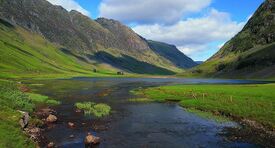Asura
This article is incomplete because it is pending further input from participants, or it is a work-in-progress by one author. Please comment on this article's talk page to share your input, comments and questions. Note: To contribute to this article, you may need to seek help from the author(s) of this page. |
Asura is a continent located entirely in the Northern Hemisphere and mostly in the Eastern Hemisphere of Aeia. It is bordered by the x to the north, the Opal Ocean to the west, and the Asur Sea to the south. It comprises the westernmost part of Asuratai.
Etymology
The name Asura is derived from the ancient Fiorentine goddess Asurae who represented the sea it surrounded, the Asur; though the continent itself was named Caerulea by the Fiorentines after the colour of the waters. L'Asur as it was known to the ancient Asurans was believed to mean life, although other etymologists believe it is more accurate to describe the word Asur to mean wealth or abundance. Etymologists believed this was because the sea was the effective lifeblood of the Empire, allowing the Empire to maintain control over the region and trade with neighbouring cities and civilisations.
Some languages use names which come from derivations of Asur, such as Vrnallian Hazurug which derives from a word Ásúrku referring to the coastal region along the sea. In Veleaz, the Asur is the name of its single island territory, so as to avoid confusion, the sea is called the Aglo, derived from a mixture of the words Alma, meaning Lifeblood and Agua, meaning Water.
Notably, in both languages spoken in Crylante, Asura is called Æsira, thought to be derived from an old East Crylantian word meaning both mankind and the west.
The Lhaeraidh name for the continent has wholly different origins and is taken from the ancient Lhaeraidh name for the subcontinent of Lhedwin, Cuanfuar, which translates roughly into Siarad as 'Cold Harbour'. The reason why the Lhaeraidh use the ancient name for Lhedwin as the name for the continent of Asura has its roots in the 'Golden Age of Raiding' which started with raids on Lhedwin and graduated south and east. As far as the Lhaeraidh raiders were concerned their victims and destinations were all more or less the same and so every region they raided became known as a cuanfuaryr. Eventually the term Cuanfuar became the name for the continent as a whole.
History
Between the 5th century BC and the 4th century CE, the continent of Asura was dominated by the Empire of the same name, giving rise to the various Latin-Romance cultures that dominate the southern continent. The borders of the Empire at its height roughly correlate with the geographic boundaries of the modern continent, extending to meet both Arabekh and Majula in the south, whilst bordering Engortia to the East.
With the decline of the Empire, Asura saw the creation of various kingdoms and empires, giving rise to feudalism and traditions of honour and chivalry, with various new cultures dotting the Aeian map, spreading their influence far and wide through maritime adventures and commercial trading.
However the onset of the industrial revolution catapulted Asura into the modern age, which in conjunction with the already growing global empires the continents nations possessed, allowed the continent to dominate Aeian affairs throughout the modern age. Yet such Empires were not to remain, with many nations making desperate futile attempts to retain their colonial possessions resulting in a period of uncertainty and recession throughout the majority of the 21st century.
Today, although Asura may have moved away from its colonial past, it has resolved its economic difficulties; allowing the continent plays a key role within Aeian politics, with nations such as Midrasia playing a key role in the foundation of the modern Asuran Community.
